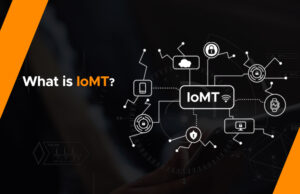With the help of 5G, technological advancements in artificial intelligence (AI) and machine learning have dramatically accelerated the digital transformation process. To guarantee a constant, dependable, and adequate power supply, data centers are at the center of technological innovation.
The ongoing situation in the wake of COVID-19 has led to an unprecedented demand for digital tools and network services that will allow for remote collaboration and cloud-based processes while ensuring business continuity with the least disruption.
For example, hospitals and healthcare institutions rely on data centers to store and transmit large files, like CT and MRI scans, and make telemedicine technologies possible. The effects of unplanned downtime in the healthcare industry go far beyond interruptions to operations and monetary costs; rest could also interfere with patient care, which could be life-threatening depending on the patient’s needs.
Data centers have played a crucial role in supporting businesses and organizations across all industries as digital transformation, technological innovation, and remote work continues to define the 21st century. However, since uptime is crucial for all data centers and the applications that depend on them, it is challenging to single out the most critical data center market from a power perspective.
More About Data Centers
Data centers are a network of computer servers that have become essential for storing, processing, and distributing information. The first picture of a data center that comes to mind is a sizable structure filled with rows and servers, transmitting and receiving millions of bytes of data every second and emitting a recognizable hum.
Data centers have been essential in assisting companies and organizations in all sectors as digital transformation, technological advancement, and remote work continue to define the 21st century. Despite this, it is challenging to identify the most critical data center market from a power standpoint because uptime is crucial for all data centers and the applications that depend on them.

For example, hospitals and healthcare organizations rely on data centers to store, transmit, and enable telemedicine technologies for large files like CT scans and MRIs. Unplanned downtime in the healthcare industry can have effects far beyond business disruption and monetary costs; it may also interfere with patient care, which could endanger patients’ lives depending on their needs.
The emergence of technologies like cloud computing, deep learning, and the industrial internet of things changed how data is stored, processed, and retrieved. The infrastructure of data centers needs to be more flexible, able to grow and shrink in response to demand, or quickly scalable technology. To ensure that energy efficiency and uptime are at their highest levels, they must have total visibility into the operation. They also need to connect with intelligent grids to give operators more control.
Considerations Prior to a Data Center Upgrade
The primary method for expanding the data center’s IT capabilities is to instill upgrades. By replacing outdated or underperforming IT assets, they improve security, reduce operating costs, increase resilience, and boost performance while reducing downtime. However, upgrades are only partially risk-free: oversights and errors can result in unanticipated downtime, problems with workload availability, performance disruptions, and intolerable management or security gaps. It’s crucial to complete upgrades successfully the first time around or, at the very least, to have the ability to recover quickly if something goes wrong.
Preparation is the key to efficient, fruitful, and meaningful data center upgrades. To significantly improve the upgrade process, be aware of the objectives and the routes to achieving each.
Recognize Your Company’s Requirements
Business leaders sometimes make some of the most expensive and dangerous errors when they choose to make unnecessary technology investments or when they need clear ROI criteria. Upgrades should improve the business’s operational efficiency and competitiveness rather than acting as a showcase for cutting-edge technology. They should focus on the following:
- Extending essential resources, like computers or storage
- Allowing for additional, new, or updated workloads for applications
- Supporting more users, workers, or transactions
- Reducing the price for each user or transaction
- Building IT capabilities like disaster recovery, business continuity, and workload resilience.
Identify The Targets That Require Upgrades
Determine the upgrade project’s scope and the hardware, software, services, policies, processes, and workflows that will be impacted once the business needs have been clearly defined.
Upgrades are never a wrong choice. Determine the upgrade scope to avoid potentially disastrous oversights, such as unforeseen hardware or software version incompatibility. Upgrade scope can be extremely narrow and specific.
Think about a dated legacy workload and hardware that is workload-dependent. The essential workload could be converted into an updated software product, deployed on capable new server hardware, and the outdated hardware retired. The legacy server and its legacy application would be the main upgrade targets in this scenario.
Improve Current Infrastructure
Every component in a data center has a lifespan, and outdated hardware can hinder operations. Take extra time to consider tasks or projects that might not directly affect the intended upgrade but can still benefit the business and infrastructure in a broader sense as you review infrastructure to determine the scope and requirements for a promotion, such as the following:
- giving a crucial application redundancy
- removing redundant code from programs that don’t require it
- upgrading outdated cabling to enable more network bandwidth
- updating power backup and distribution components, such as uninterruptible power supply subsystems
- relocating racks and sealing gaps in open hardware to improve cooling airflow
- Examining the tools and capabilities for system management.
Such tangential or secondary upgrades can improve the data center’s performance, dependability, and efficiency.
Conclusion
To meet the increasing demand for capacity in 2022–2023 and beyond, data center operators are reimagining and reprioritizing the power architectures at the core of their facilities. Developing an intelligent infrastructure powered by renewable energy requires the introduction of a distributed and decentralized DC power architecture. Recognize each standard’s function, assess its significance or business benefits, and plan to implement the criteria you want as part of ongoing data center upgrade projects.







